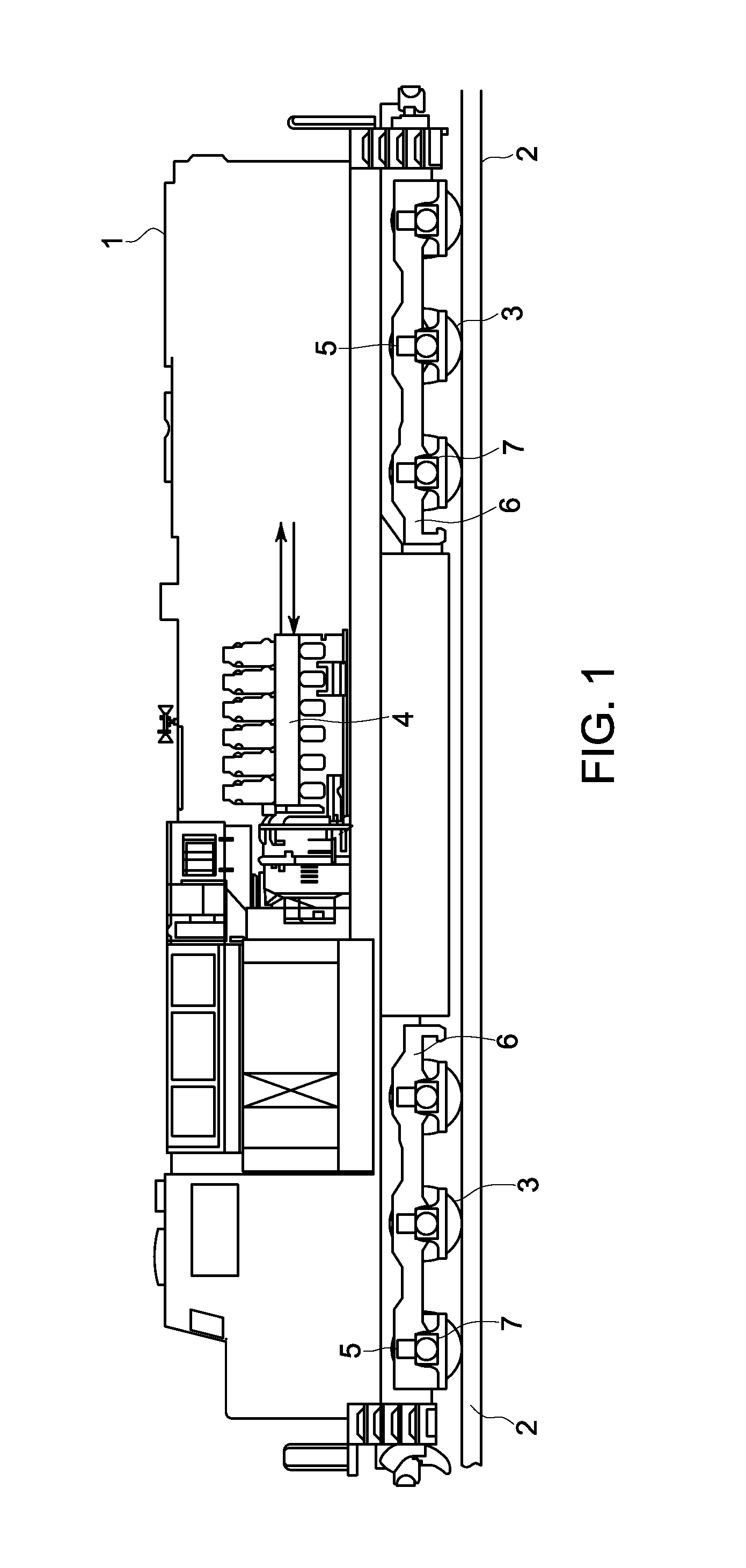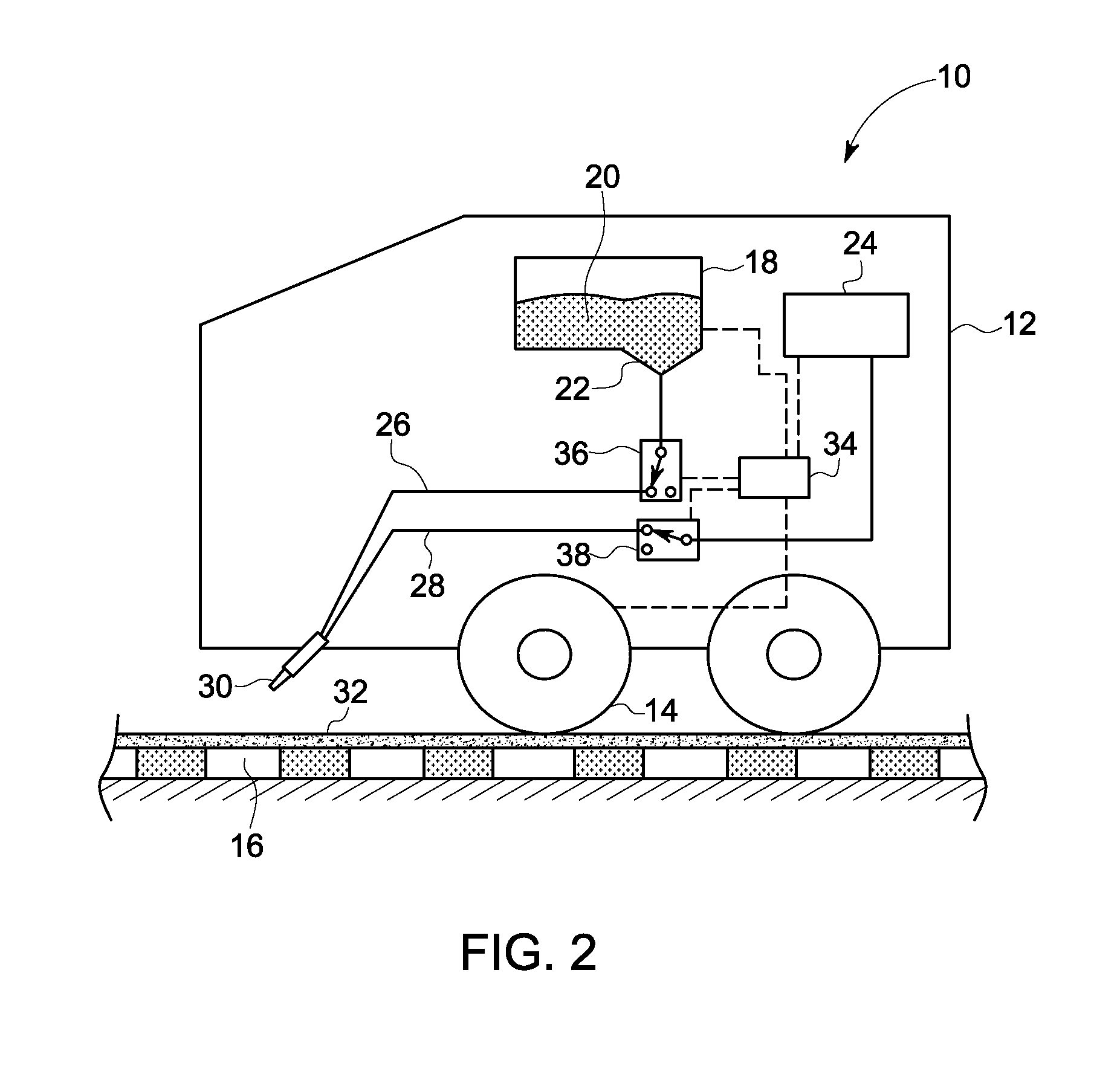Tractive effort system and method
- Summary
- Abstract
- Description
- Claims
- Application Information
AI Technical Summary
Benefits of technology
Problems solved by technology
Method used
Image
Examples
Embodiment Construction
[0052]Embodiments of the invention relate to a tractive effort system for modifying the traction of a wheel contacting a surface, and associated methods.
[0053]As used herein, “contact surface” means the area of contact on a surface that both is where a nozzle directs a stream of tractive material and where a portion of the surface will meet a wheel that is rolling over the surface; it is distinguished from the wheel / surface interface that, at any point in time, is where the wheel is actually contacting the surface. In exemplary instances, a surface can be a metal rail or pavement, and the wheel can be a metal wheel or a polymeric wheel. “Rail vehicle” can be a locomotive, switcher, shunter, and the like and includes both freight haulage and passenger locomotives, which themselves may be diesel electric or all electric, and that may run on either AC or DC electric power. “Debris” may mean leaves and vegetation, water, snow, ash, oil, grease, insect swarms, and other materials that ca...
PUM
 Login to View More
Login to View More Abstract
Description
Claims
Application Information
 Login to View More
Login to View More - R&D
- Intellectual Property
- Life Sciences
- Materials
- Tech Scout
- Unparalleled Data Quality
- Higher Quality Content
- 60% Fewer Hallucinations
Browse by: Latest US Patents, China's latest patents, Technical Efficacy Thesaurus, Application Domain, Technology Topic, Popular Technical Reports.
© 2025 PatSnap. All rights reserved.Legal|Privacy policy|Modern Slavery Act Transparency Statement|Sitemap|About US| Contact US: help@patsnap.com



